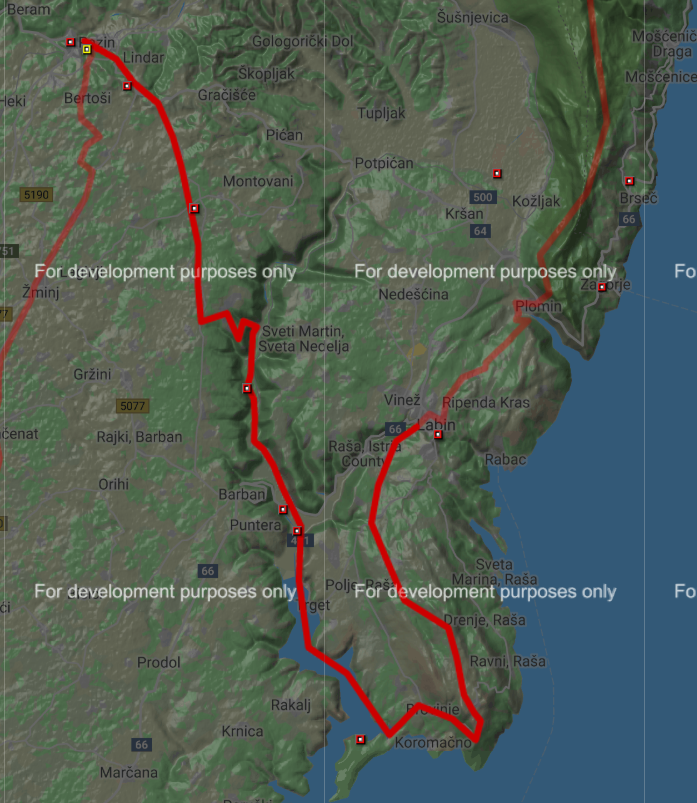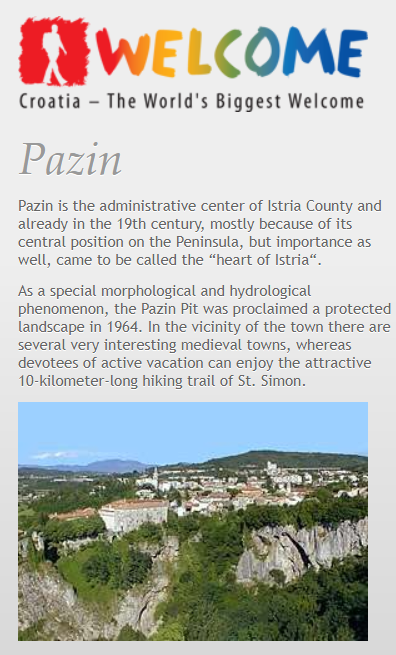30,000+ Illegal Buildings in Istria, Labin Mayor Announces Measures
September the 21st, 2022 - There are a shocking 30,000+ illegally constructed buildings in Istria, and Labin Mayor Valter Glavicic has announced measures to combat such ''wild'' construction practices.
As Morski writes, the topic of the illegal felling of as many as six hectares of forest which stretches across the protected Labin-Rabac-Prtlog area by a private company called Mari Top from Zagreb has opened pandora's box when it comes to illegality in Istria. The subject was broached by not only the Labin Mayor, but also by the director of the Natura Histrica Public Institution, Silvia Buttignoni.
This led to discussions about illegal deforestation, subdivision, and of course, the topic that plagues Croatia - illegal construction. Unfortunately, the wider area of Istria County has been dealing with this for decades, but it was only a few years ago that the problem apparently came to the fore of the public's mind, as reported by Glas Istre/The Voice of Istria.
When the topic became much more of a burning one, local self-government unit leaders decided to tackle the problem more intensively, and now increasingly drastic measures are being announced. Local leaders are therefore asking the state to put the proper mechanisms in place in order to make it possible for them to finally start demolishing these illegal structures.
It is interesting to mention that the Labin Mayor, Valter Glavicic, also announced that they are keeping several suspicious locations in the wider area under surveillance and that the authorities will react by reporting any sign of illegal activities, all in order to start solving the problems from the very beginning. Unfortunately, all these plans are still no obstacle to private companies coming in to destroy forests and build illegal buildings everywhere.
For more, make sure to check out our dedicated politics section.
8 Magical Towns in Central Istria that Are Absolutely Worth Visiting
May 30, 2022 - Istria is one of the most fascinating regions of Croatia, and while most are more familiar with its magical seaside towns like Pula, Rovinj, Umag, or Poreč, the many medieval towns in Central Istria are just as impressive and definitely worth being explored.
In recent years, Istria has shown its might as a tourist destination, defying the surreal circumstances caused by the coronavirus pandemic by being easily reached by land from other European countries. But Istria is not at all a consolation prize for its proximity, quite the opposite. The largest peninsula in the Adriatic is home to spectacular towns, world-renowned wines and olive oils, unique cuisine, numerous beaches, five-star hotels, and a wealth of culture and history.
But not everyone comes up with an idea of this region beyond the sea, the islands, and the beaches, something that happens similarly in Dalmatia. Some forget that much of Istria's magic lies (not so) far from the coast. With this in mind, here we show you some of the best destinations you can visit in Central Istria. Warning: Not to be confused with Central Istria as a public administration, since it only covers some districts. In this article, we will mention destinations on the Istrian peninsula that are not located by the sea.
Pazin
Located right in the heart of Istria, Pazin is known for medieval Pazin Castle, the former residence of the Istrian margraves. The intensity of life here is pretty much the same in winter and summer, with the monthly exception of every first Tuesday, when a flood of curious buyers from all over Istria runs into the town to visit the traditional Pazin Market. Pazin is very rich in culture and history due to the presence of different civilizations, empires, and governments throughout time. Be sure to visit the Pazin castle, the Pazin abyss, the Franciscan monastery, the Memorial Center of Union and Freedom, the state archives, and more. Learn more about Pazin here.
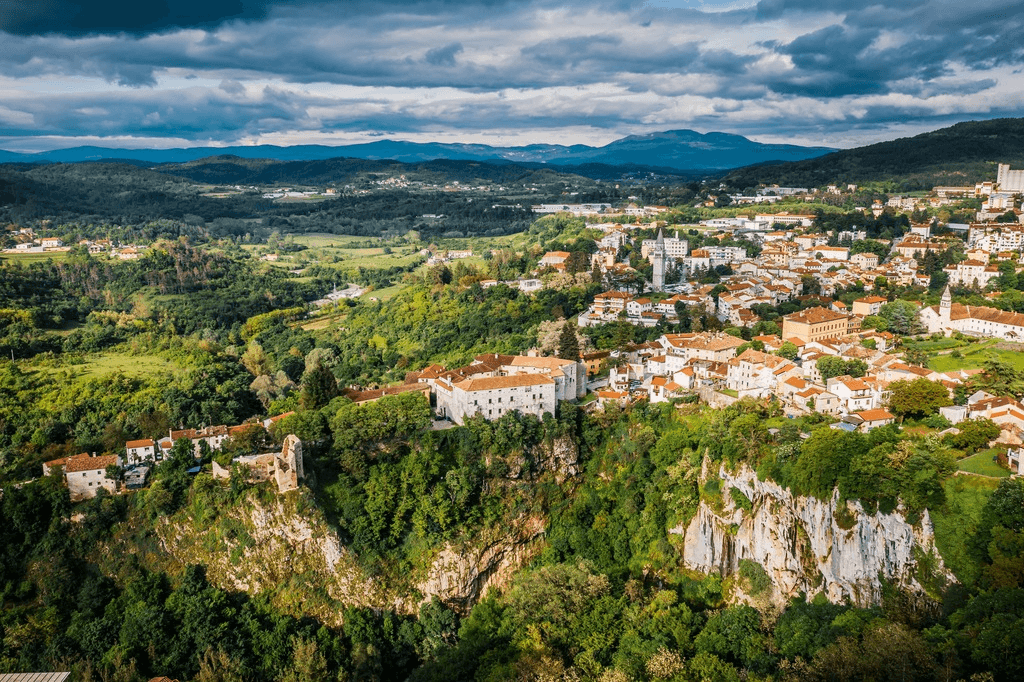
Image: Tourist Board of Central Istria/Official Website
Motovun
Motovun sits on top of a hill towering over the valley of Mirna, the biggest Istrian river. The location was settled since Celtic times, but the town we know today was mostly built under Venetian rule in the Middle Ages. Its centuries-old walls and buildings are the best preserved in Istria, giving the place a unique charm. Yet Motovun is more than its quaint architecture and breathtaking view. It is the Croatian capital of truffles and hosts a famous film festival, which will take place from July 26 to 30 this year. Learn more about Motovun here.
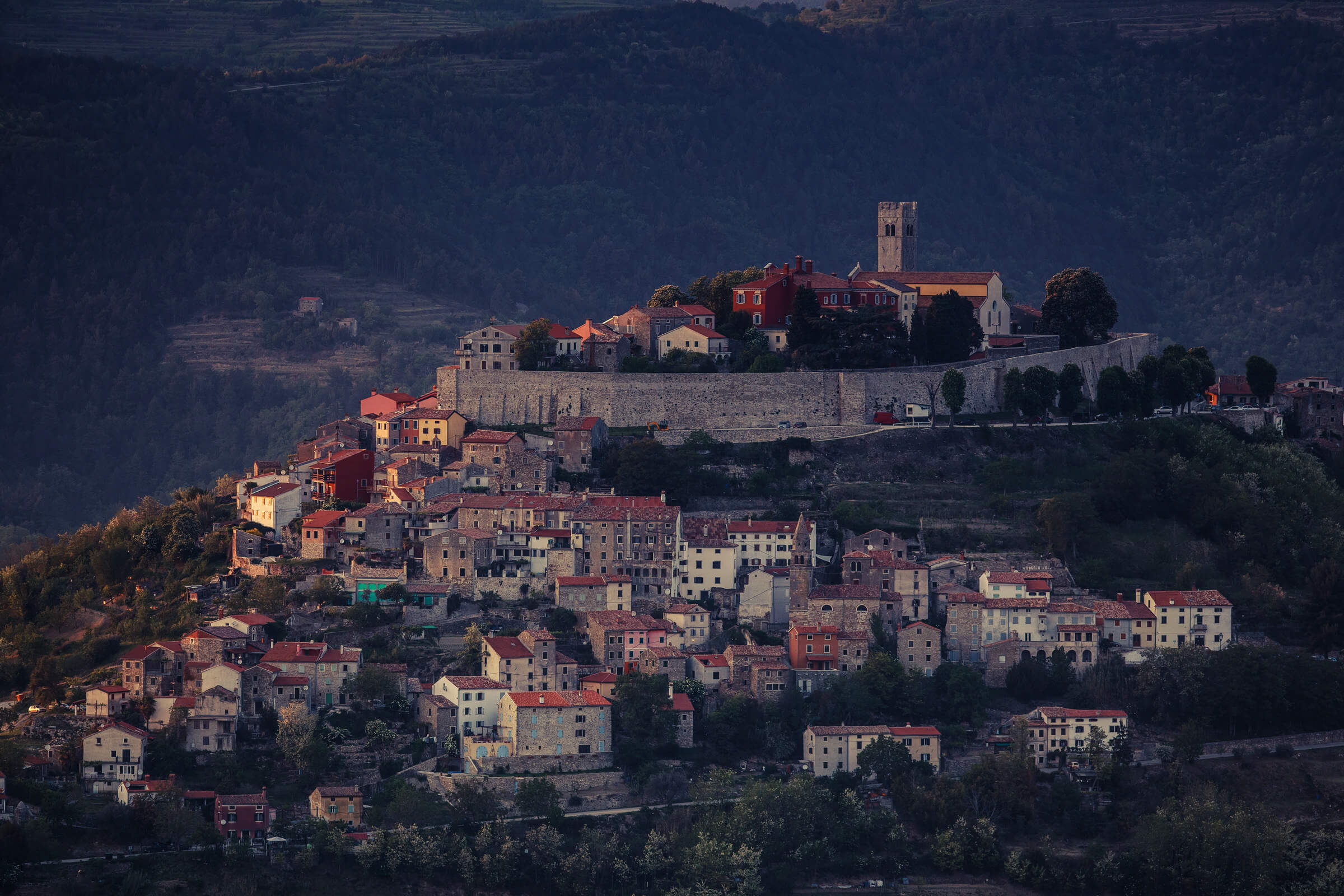
Photo: Mario Romulić
Hum
Often referred to as the smallest town in the world, Hum is a town situated on a hilltop above the source of the Mirna River. It is located in the vicinity of Buzet and Roč. The towns of Roč and Hum have been connected through a shared history and culture since ancient times, and are now also connected by the famous Glagolitic Alley. Hum has just 20 inhabitants, and therefore its well-known name as the smallest town in the world. Learn more from Hum here.
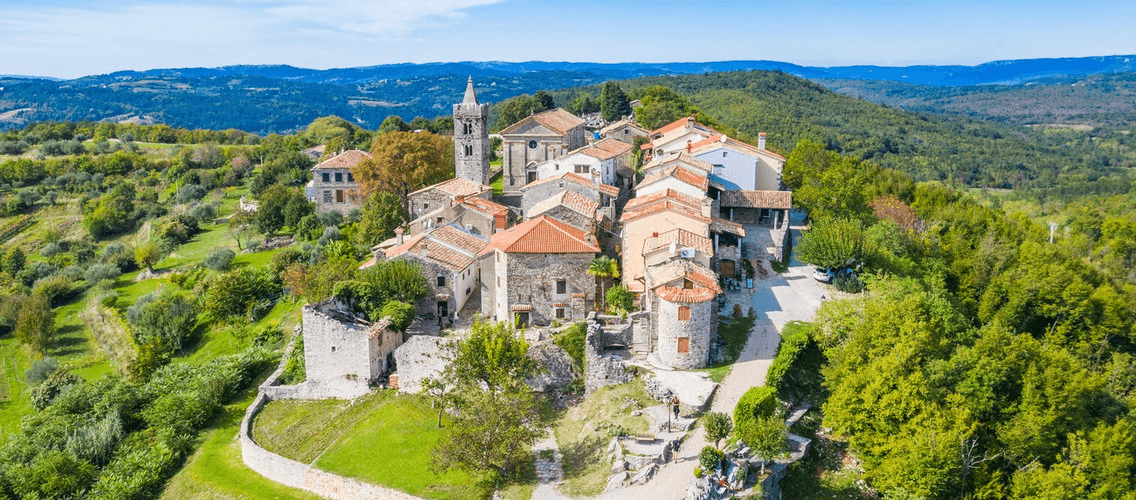
Image: www.valamar-experience.com
Labin
Labin is the biggest town in the otherwise not-so-populated and not-so-popular eastern Istria. In the past, the town was known for its coal mines. Nowadays, all the mines have been closed, and there are no more miners. The community is turning more and more towards tourism - but is far from being overwhelmed by it. Its old town, sitting on top of a hill, is among the most beautiful ones on the peninsula. Although it's not located by the sea, and exactly because of that, Labin has a stunning view of Kvarner bay. Learn more about Labin here.
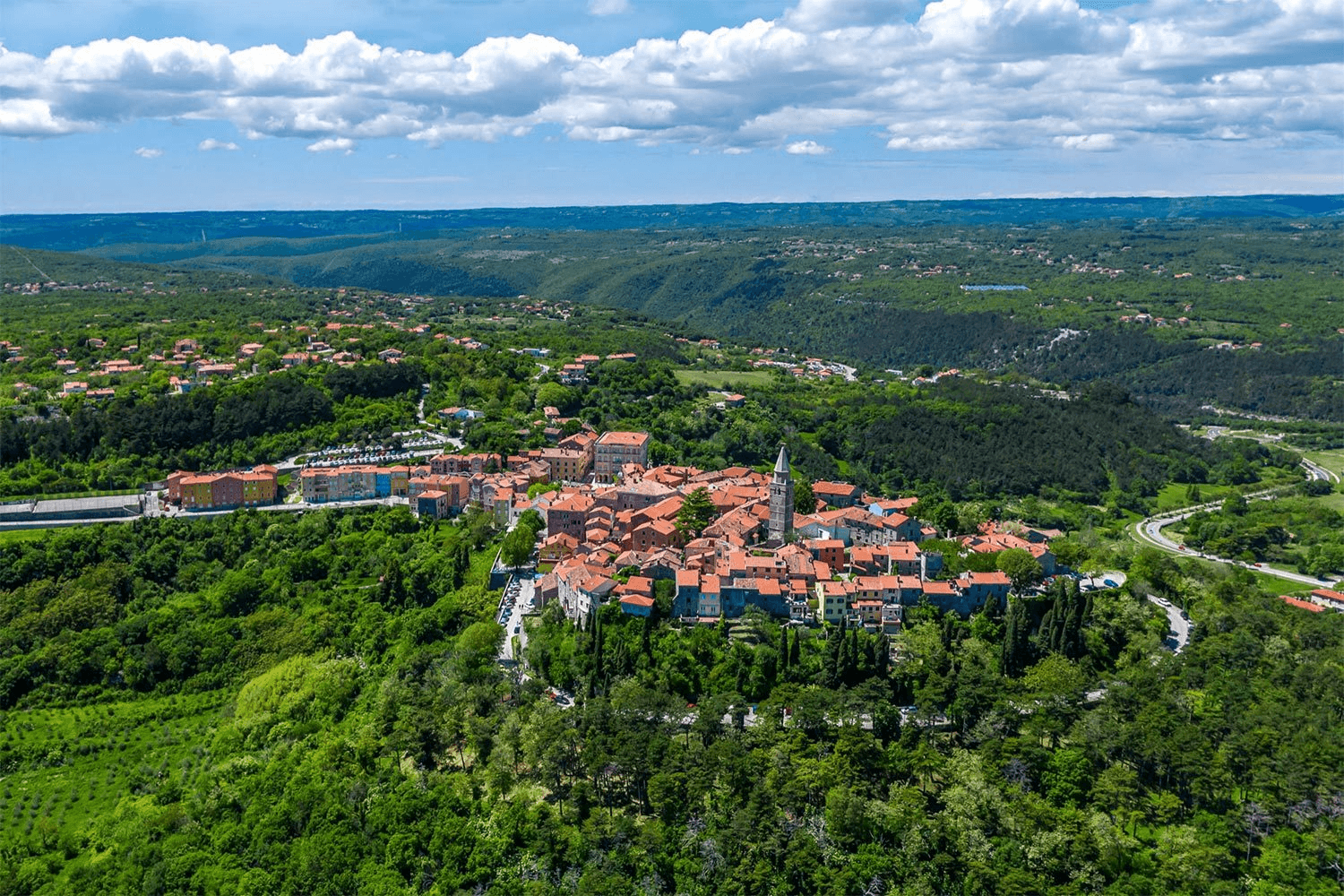
Image: Labin-Rabac Tourist Board/Official website
Vodnjan
Vodnjan is situated near Pula, where excellent olive oil is produced, and its surroundings have the largest number of kažun houses, dry-stone houses in the Mediterranean. The largest church in Istria –Parish Church of St Blase was built at the end of the 18th century, with the 63-meter-high bell tower. The church holds a valuable collection of sacral art and preserved bodies of saints, the so-called Vodnjan mummies, due to which it is visited by around 16000 people a year. Learn more from Vodnjan here.

Image: www.visit-croatia.hr
Buje
The area of the town of Buje is located in the northwestern part of the Istrian peninsula. Approximately 5,300 inhabitants live in an area of 103.40 km2. The town of Buje is located between the rivers Mirna and Dragonja. In the north, there are the hills of the Upper Buje, and in the south the Adriatic Sea in Kanegra and the Piran Bay. It is a rolling and hilly area covered with vineyards, olive groves, and arable land dotted with oak, cherry, and pine forests, a karst belt full of interesting geological phenomena, and meadows of Mediterranean vegetation, among which thyme and spruce predominate. Learn more about Buje here.
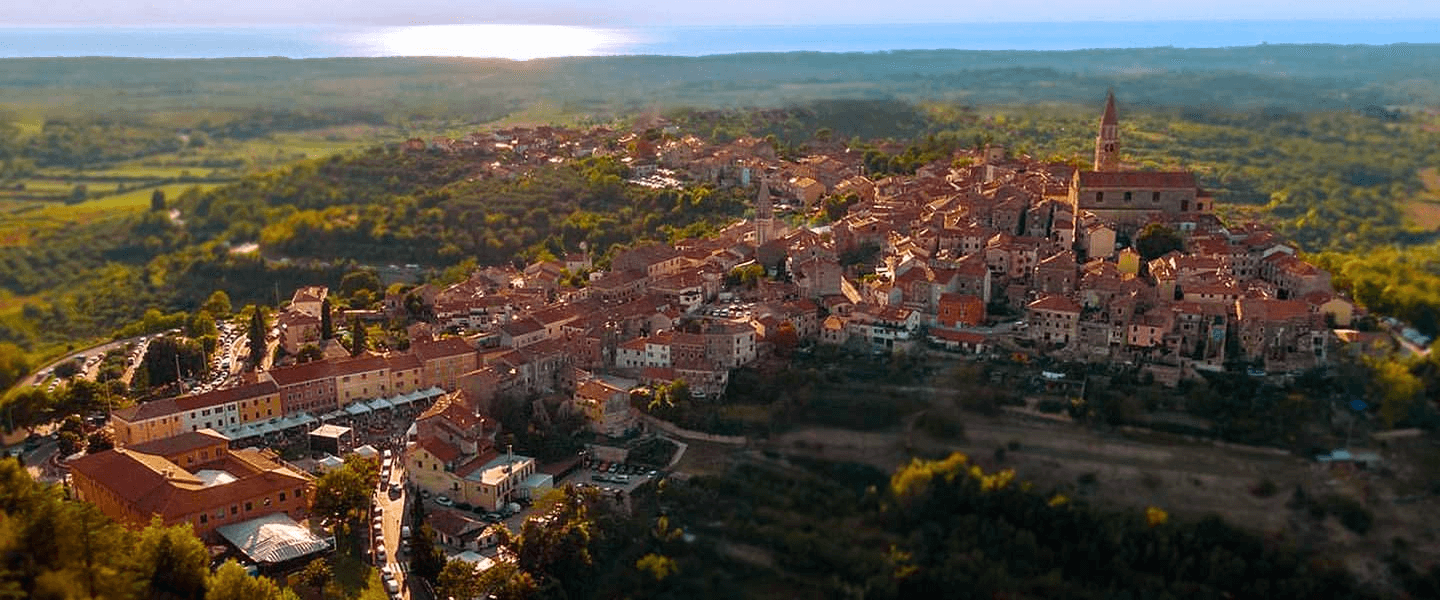
Grožnjan
The nearby Motovun might be the quintessential Istrian hilltop town, but Grožnjan is also well worth visiting. As is the case with many Istrian towns, it was settled during the Roman times, built under Venetian rule in Middle Ages, and well preserved up to today. The place was almost deserted after World War II, but in 1965 a group of artists decided to turn the town into an art colony, which remains up to the present. It’s a great accommodation spot for those who don’t need the sea, and it makes for a good base for exploring the hilly part of Istria. Learn more about Grožnjan here.
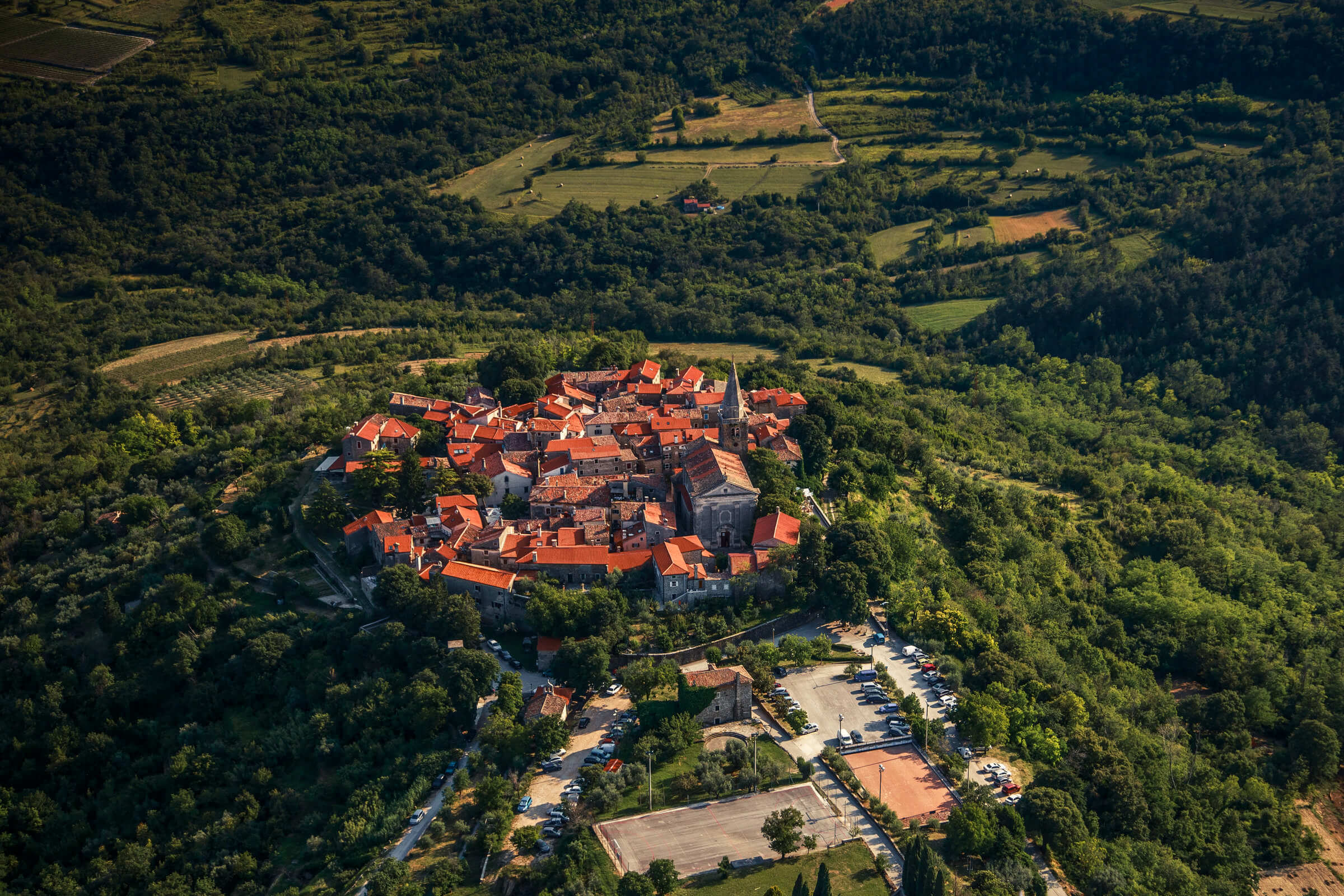
Photo: Mario Romulić
Pićan
Sometimes it is not easy to follow the traces of Pićan in historical sources because it hides under various names. The origin of the name Petina is attributed by some to the assumption that the Diocese of Pićan was the fifth in the world, with the word five (pet, in Croatian) having Celtic roots. Pićan is certainly inhabited in distant prehistory. The oldest parts of the Istrian hillfort were located on the hill of Calvary, north of today's settlement, and then it is assumed that the Celtic tribe Secusa lived there. In Roman times, probably in the same strategically well-chosen place, there was a military stronghold and the settlement of Petina. Learn more about Pićan here.
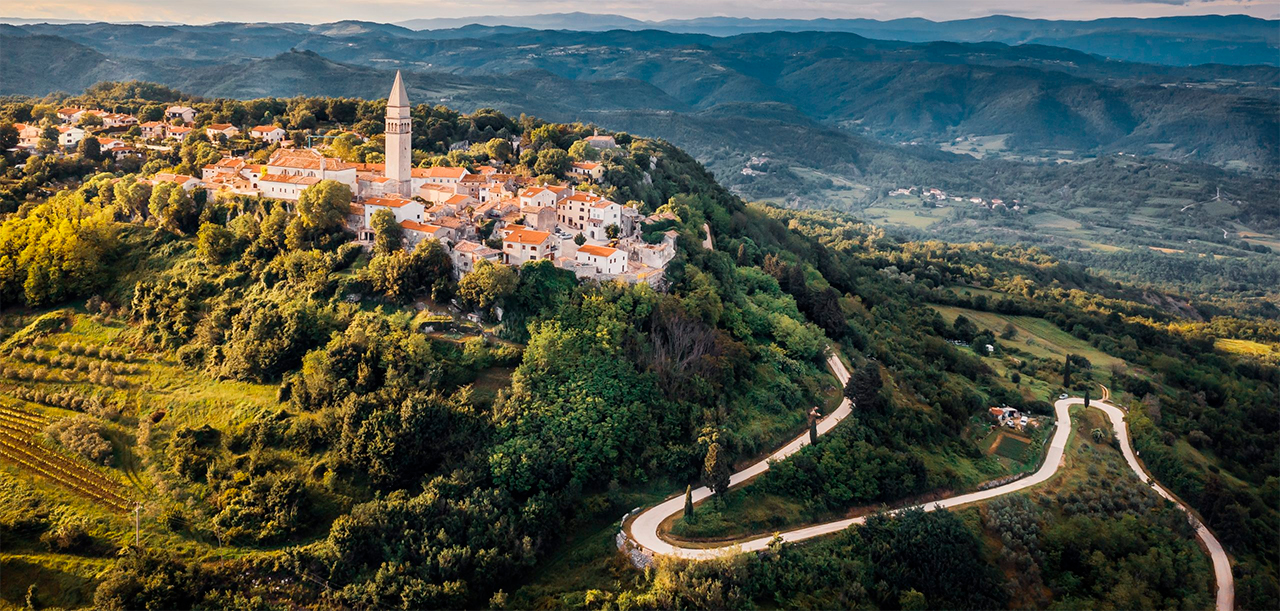
Image: Pićan municipality/Official website
For more on travel in Croatia, follow TCN's dedicated page.
Projects Aimed at Both Tourists and Residents Launched in Labin, Rabac
March the 30th, 2022 - In the gorgeous Istrian towns of Rabac and Labin, projects have been launched which are aimed not only at tourists, which is often the case in towns which rely heavily on visitors from abroad, but also at locals.
As Poslovni Dnevnik writes, at the assembly of the Tourist Board of the City of Labin, Labin Mayor Valter Glavicic announced some new investments and works that will follow in both Labin and Rabac, and in addition to tourism, they're also important for the local population, as reported by local portal Glas Istre/The Voice of Istria.
One of the major investments is the announced architectural study for the arrangement of the very centre of Rabac, more precisely for the Rabac waterfront. The first meetings are already getting underway, which is what has officially kickstarted the preparation of the study because public bodies have been invited to get better acquainted with the planned news, followed by hoteliers, private renters, local enterprise owners, as well as the companies and local residents of Rabac. The entire process is being led by architect Idis Turato.
The plan, as can be heart, is to make something everyone can be proud of from the waterfront in Rabac, and it is an area spanning approximately seven hectares. After all of the discussions and public participation, the study will define the micro locations within the project, which will require an architectural solution.
"I'd like to invite you to be active participants in something that will define the further development of Rabac as a destination for the next thirty years. Everything is related to the activities of not only hoteliers and those in the hospitality and catering sector, but also to all those who have something to do with tourism, all of the residents of Labin, and therefore I'm inviting you to get involved with as many suggestions as possible, because at the moment we have a "white paper". That's why it's up to all of us to do quality work together for the future of this region. This approach is different than the usual one, it isn't the classic bureaucratic one, there will be a lot of public participation through talks, which is extremely important considering what kind of project it is,'' said Glavicic.
He announced that the most favourable bidder for dealing with the very core of the old town had now been selected, with whom a contract on the main project would be signed.
"After the preliminary design and location permits, the company Fluming from Rijeka was selected and the main project is now underway to complete the reconstruction of the communal infrastructure, starting with all of the installations, ending with the ground floor and replacement of all stone surfaces. I believe that the project will be finished by the end of this year,'' said Glavicic
In about twenty days, work will begin on the second phase of the reconstruction of the road through Kapelica, which is being financed by the County Road Administration, with partial co-financing from the City of Labin, and it is an investment worth about 8 million kuna in total. The first phase was worth about 5.5 million kuna, and when the works of the second phase are completed, the road will be completely renovated with a sidewalk built all the way from the roundabout at the beginning of the settlement to Morcaki.
Works worth around 7.5 million kuna are also being completed in Vinez, most of which are being co-financed with money from EU funds, through which Vinez received sewerage, a new water supply network and a complete road from the school to Marciljani. The mayor of Labin also mentioned that investments have recently been made in the road and in the area of Ripenda, and next year, the plan is to continue towards the settlement of Ripenda - Kosi.
An important topic is the Agglomeration project worth a massive 776 million kuna, which is probably the largest project in the history of Labin, for which the director of Vodovod Labin signed a contract with the Government of the Republic of Croatia during an Assembly, which co-financed it all with a grant worth more than 4 million kuna.
“The project of all projects is definitely the Agglomeration and we expect to get all of the necessary location permits this year. The requests have been submitted, and after that, I hope, by the spring of next year, the building permits will be issued, from the purifier on the site of the former TPP Vlaska, to the sewerage network. I believe that we'll be able to start some of the work next year. Many things are related to this project, as are the works on the roads because part of the sewerage system will be pulled along the routes of roads, for example in Gornji Rabac, so we'll renovate a part of the road as part of these works. These are just some of the investments and I believe that next year will definitely ho down in the history of our region in terms of the strength of the investments that are set to follow. Things are heading in the right direction, we're going to continue to build Labin together, and most importantly, develop the infrastructure in all parts of the city,'' concluded Mayor Glavicic.
For more, make sure to check out our lifestyle section.
Kaštelor-Labinci, Motovun, and Veliko Trojstvo in the Race for UNWTO Awards
September 21, 2021 - Three Croatian municipalities and villages, two in Istria and one in Bjelovar, are among the candidates for the novel initiative of the World Tourism Organization to promote rural tourism, and this is why Kaštelor-Labinci, Motovun, and Veliko Trojstvo will compete in the UNWTO Awards.
With the aim of improving the role of rural tourism, the World Tourism Organization (UNWTO) has launched a pilot initiative "Best Tourism Villages", reports HrTurizam.hr. As part of the activities, UNWTO member states, until 15 September, had the opportunity to apply for up to three candidates: villages or municipalities. They will present their places as drivers of sustainable change in the social, economic, and environmental aspects. The Municipality of Kaštelir-Labinci, the Municipality of Motovun from Istria, and the Municipality of Veliko Trojstvo from Bjelovar-Bilogora County were elected as Croatian representatives.
The initiative includes three pillars and two awards. Villages that are an outstanding example of a rural tourism destination and that are committed to sustainability in all its forms - economic, social, and environmental - will be awarded the label "Best Tourist Villages of the UNWTO". Villages that do not fully meet the criteria for the label will be provided with an upgrade program to support the UNWTO and their partners in working in problem areas. Finally, a network will be created that will provide space for the exchange of experiences and good practices, learning and creating new opportunities for development. It will include representatives of villages awarded the “Best Tourist Village” label by the UNWTO, villages participating in the Upgrade Program as well as experts, public and private sector partners engaged in the promotion of rural development tourism.
The aim of the UNWTO Awards is to strengthen the role of tourism as a positive force for transformation, rural development, and community well-being. It seeks to increase the sector's contribution to reducing regional inequalities and combating the depopulation of rural areas. It also seeks to enhance the role of tourism in valuing and protecting rural villages, along with landscapes, knowledge systems, biological and cultural diversity, local values, and activities, including gastronomy.
To find the most complete information on all the destinations in Croatia that you can visit, take a look at the Total Croatia guides HERE. Now in your language!
For more, check out our dedicated travel section.
Epic Imagination! How Converted Mines Below Labin Istria Will Look
December 13, 2020 – An incredible reimagining of the mines that run deep below the centre of Labin Istria – the two-kilometre long complex will be accessed spectacularly via a see-through elevator
French writer Jules Verne liked to venture deep. The second most-translated author ever to have lived (between number one, Agatha Christie and number three, William Shakespeare – both British), his stories were quite often regarded as fantasy tales for children, owing to the poor, early transference of his French text into English. When read in his native tongue, he fantastical imagination, perhaps the roots of all science fiction, are better expressed. This is plainly evidenced in two of his most famous books, 20, 000 Leagues Under The Sea and Journey To The Centre Of The Earth.
Jules Verne's inspiration can be found in physical form on the streets of Zagreb, where the 20, 000 Milja bar entertains with its submarine-themed décor. Though without any formal attribution, the project about to be undertaken by the town of Labin Istria could just as well be inspired by his other bestseller. Because, just as Jules Verne's journey to the centre of the earth was like no fantasy previously expressed, a limitless imagination seems to have gone into how the mines below Labin Istria will look once converted.
Newly revealed images display a visitor's space like nowhere else in Croatia. Though not quite at the centre of the earth, the new attraction lies some 166 metres below ground. The thrilling experience of a visit is set to begin before you even reach its entrance – access will be gained by a see-through elevator (lift).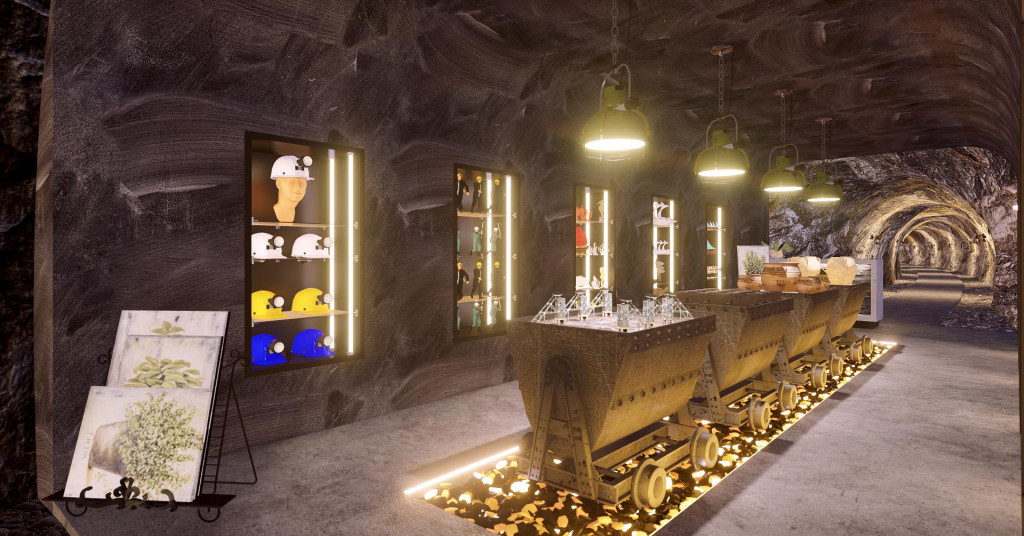
The attraction is set to be divided into five modules – entrance and information area, an art gallery for exhibitions and multimedia installations, an escape room entertainment area, an education zone with 360° projections, a gastro module, centring a wine cellar ( featuring local wines from Istria, which are among the most-prized of those produced in Europe – the mine conditions being perfect for their storage) and a gift shop where souvenirs from local producers, arts & craftsmen will be available.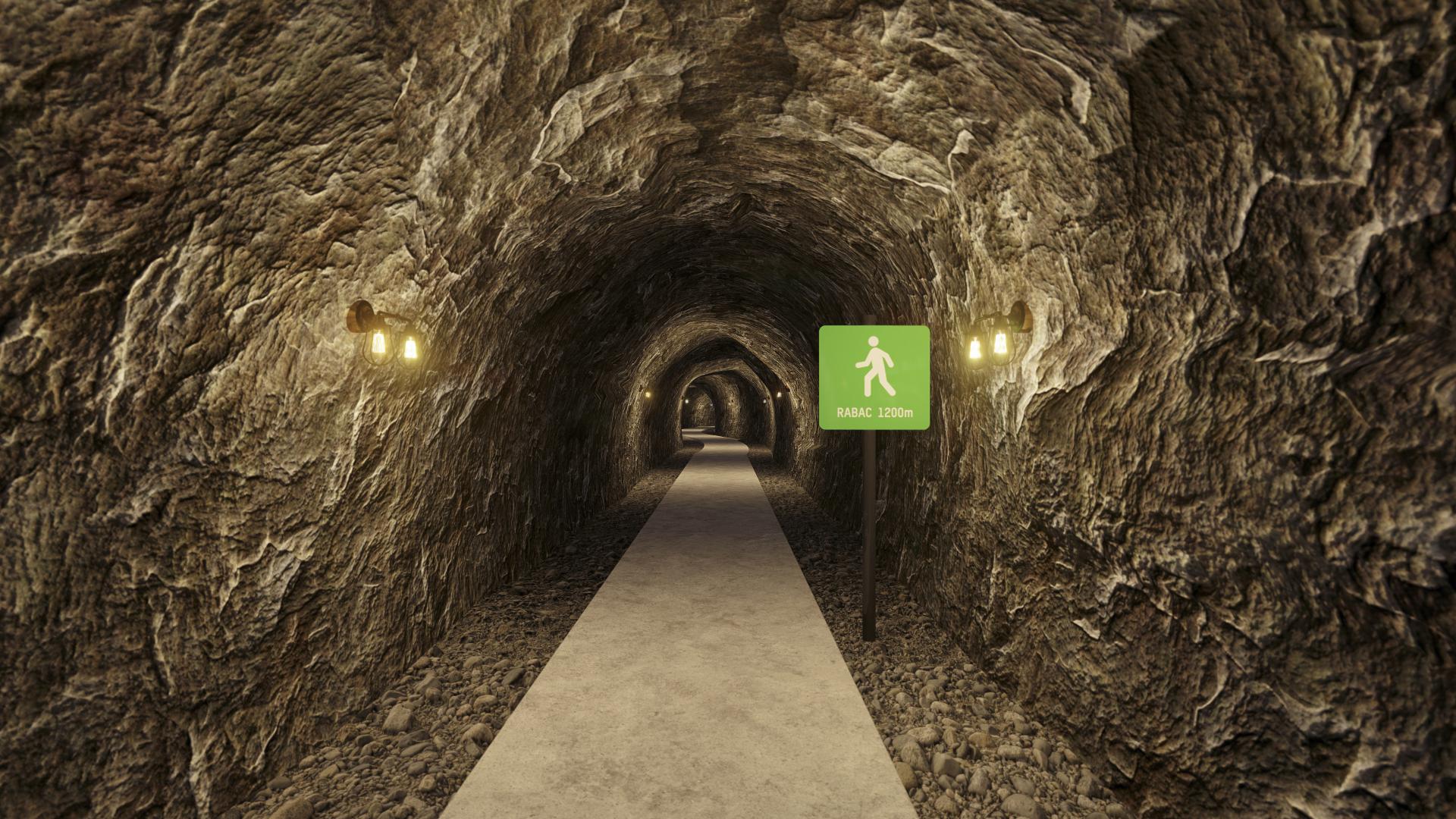
The sprawling complex is set to extend some two kilometres into the former mines of Labin Istria. That's no short walk! But, part of the route is being designed as a train ride, although the last section must be done on foot, due to the specific conditions of the tunnel.
The town of Labin Istria was once the centre of mining endeavours in Croatia. At the height of its operations, some four mines operated in Labin Istria. In early 1921, the town was the scene of a miners' strike which quickly grew into an anti-fascist rebellion, a movement essential to securing Croatia's future independent state. It was the first of its kind and resulted in the declaration of the short-lived Labin Republic (also known as the Albona Republic). This particular mine, located in downtown Labin, was the last to close and did so in 1989. 2021 is the 100th anniversary of the Labin Republic, an anti-fascist struggle for which the town is extremely proud. It is hoped that works on the mine conversion will begin then.
All images © Level 52 / 3DX Studio / City of Labin
Best Cities in Croatia Announced, Four Cities Defended Last Year's Title
October 21, 2020 – Among 28 nominated cities in the categories of quality of life, economy, and education and demographic policy, 10 of them received the award and the title as the best cities in Croatia.
As we already reported yesterday, Sveta Nedelja was named as the best city in the economy category for the third year in a row and is among the top five best Croatian cities for quality of life. Gradonačelnik.hr emphasizes the fact that Sveta Nedelja is the only city that managed to beat the competition three times in a row and win the title of the best city for the economy in the country. Besides the great success of this perspective city in Zagreb County, it is also worth mentioning other Croatian cities that excelled in this election.
The best cities in the category of the economy are also Hvar and Samobor. In the category of demography and education Cres, Labin, and Šibenik won, and in the category of all categories – the quality of life – the best Croatian cities are Krk, Rovinj, and Čakovec. The champion of the EU funds is Virovitica.
As many as four Croatian cities – Labin, Cres, Krk, and the already mentioned Sveta Nedelja – managed to defend the title of the best in our selection this year.
Four out of ten winning cities come from Istria and Primorje-Gorski Kotar Counties, but those counties also had the biggest number of nominated cities and nominations in all mentioned categories. Recall, eight cities of Istria County were competing with as many as 14 nominations, and Primorje-Gorski Kotar Counties were following with its six cities and nine nominations.
This year's selection for the best Croatian cities was held in Zagreb on Tuesday, and it has been successfully organized for the third year in a row by the Gradonačelnik.hr portal, Jutarnji list, and the Ipsos agency. Unfortunately, due to the situation with the coronavirus pandemic, a large number of finalists, and even winners, did not attend the award ceremony.
Unlike previous years, this year the Smart and Eco City categories were separated into a special selection, which is still ongoing, but a new category was introduced – the best county EU project.
Counties also received awards
After the public chose their favourite through online voting – the project PISMO of Sisak-Moslavina County and their agency SIMORA – the expert jury chose the winners in four categories. Virovitica-Podravina County with its project Be STEMpatičan! (Be STEMpathetic) is selected as the winner in the Contribution to the science and innovation category.
In the category Contribution to the local and regional community, the best project was NEWLIGHT of Krapina-Zagorje and Zagreb counties, ie the Regional Energy Agency of Northwestern Croatia (REGEA). Second place in the public selection, Mala Barka 2 of Primorje-Gorski Kotar County won in the category Contributions to cross-border cooperation, and Split-Dalmatia County won in the category of Contribution to entrepreneurship with the project Sustainable growth of small and medium enterprises with emphasis on cultural and creative industries.
Project PISMO Novska of Sisak-Moslavina County / PISMO
Labin Company With 20 Employees Works With Clients Around World
As Poslovni Dnevnik writes on the 24th of July, 2019, work in this Labin company has grown to twenty employees in four years, and we still do not function as a classical business system, but rather as a family gathering around the same job, says director and owner of Lloyds Design, Domagoj Ostović.
Today, Lloyds Design is one of the best Istrian IT companies, and has its headquarters in Labin, a city of rich mining and industrial traditions that have shaped and defined the identity of Labin for a long time, Milan Pavlović writes for Glas Istre.
And although the mines have long been closed or turned into a tourist attraction, and large industrial systems disappeared during the period of transition, Labin's identity has survived and is likely to remain as the strongest symbol of the city for a long time.
However, it is really at a purely symbolic level now, because for a very long time now, Labin hasn't lived from mining or any particular type of big industry. The new times belong to some new, innovative entrepreneurs and their stories and experiences that slowly but steadily lead their own way into an increasingly demanding business world. At the same time, they lay the foundations for Labin's new, alternative identity that will make it recognisable to new generations and the modern world.
One of those entrepreneurial stories is that of Bjelovar native Domagoj Ostović, whose love and entrepreneurial spirit led him directly to the eastern coast of the peninsula, where he started work over a decade ago. That move and that hard work saw one of the most successful Istrian IT companies emerge from nothing.
He started by designing a school paper and then posters for various Rijeka student parties, and after completing his studies, he was employed at a tourist agency in Opatija where he was in charge of the digital part of the business and where he first became acquainted with HTML and CSS programming languages.
Labin's Lloyds Design Studio, a company specialising in web design, development, software development and mobile applications, came from the first independent business which Domagoj entered into after his decision to leave his work in the travel agency and move permanently to beautiful Istria back in 2012.
The Labin company has grown over the last few years, having drawn its roots from work that Domagoj isn't proud of himself, and now employs twenty people and deals with clients from across the globe.
Make sure to follow our dedicated business page for much more.
World's Biggest Welcome in Croatia: Day 5 - Labin to Opatija (Foot, Bike)
April 1, 2019 - Putting Croatian adventure tourism on the map, with the biggest welcome in the world. Day 5 of this incredible 2011 adrenaline trip covering 2,500 km along the Croatian coast.
The World's Biggest Welcome, an ambitious adventure tourism project in 2011 in Croatia enters Day 5 of this 2019 appreciation of one of the finest tourism promotion projects ever in Croatia.
The plan? To showcase the diversity and fabulous offer of adventure tourism in Croatia by following a GPS route the length of the Croatian coast in the shape of the word 'Welcome' - thereby creating the biggest welcome in the world from a hospitable tourism country.
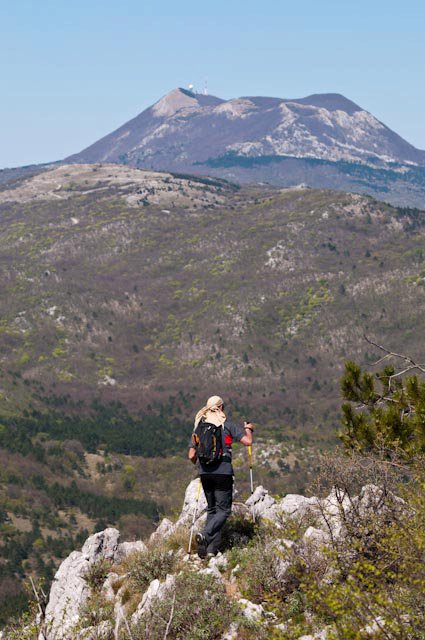
Day 5 moved on foot and by bicycle from Labin to Opatija.
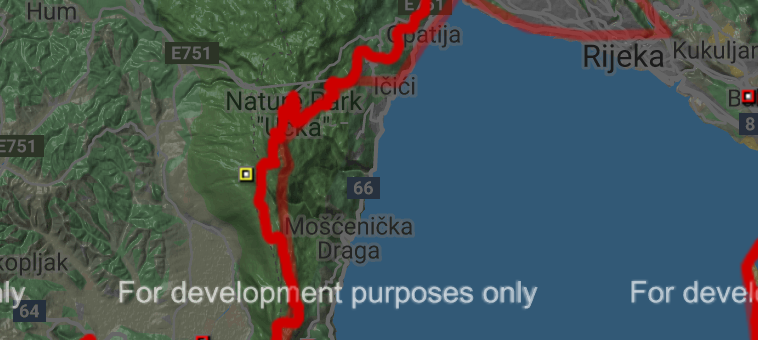
40 kilometres for the day: 10 km bicycle ride from Labin to Plomin, followed by 15 km on foot and cycling from Plomin to Učka, before heading north once more on the final part of the first letter (W of Welcome), with another 15 km of walking and cycling from Učka to Opatija.
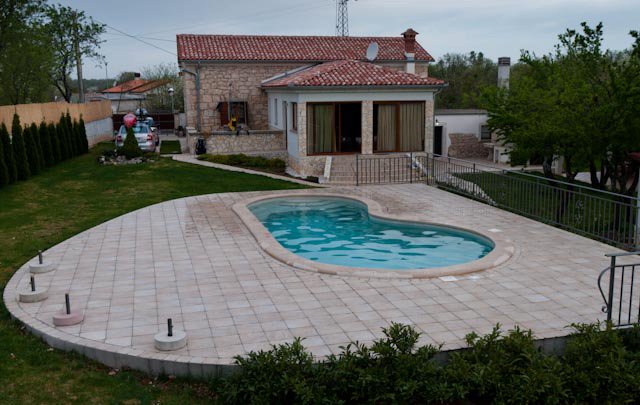
This part of the journey began with an overnight stay in Nedeščina, at Villa Celeste.
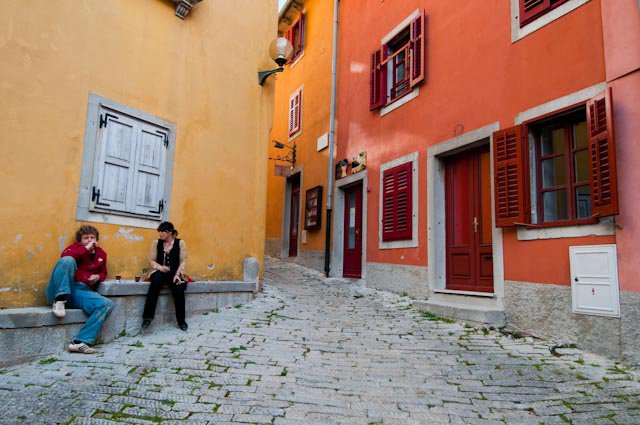
Before arriving in the colorful Labin.
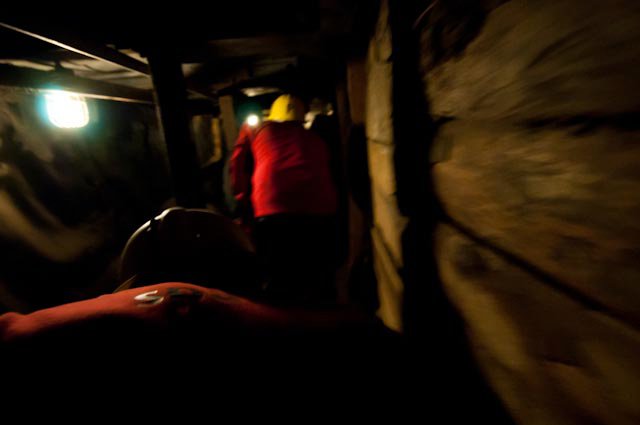
And adventuring through a mine there.
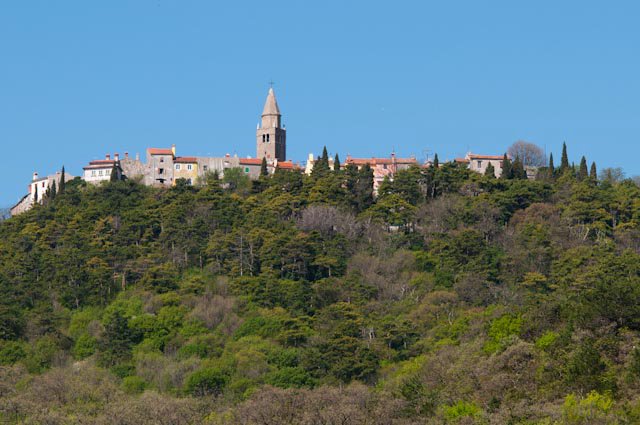
Labin in all of its glory.
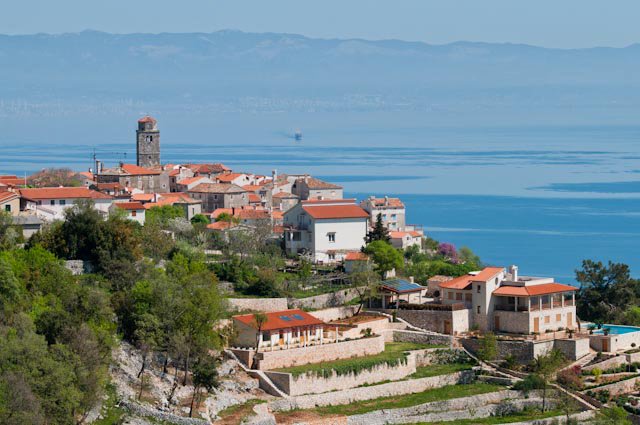
And then onto Brseč, a small village on cliffs high above the Kvarner Gulf.
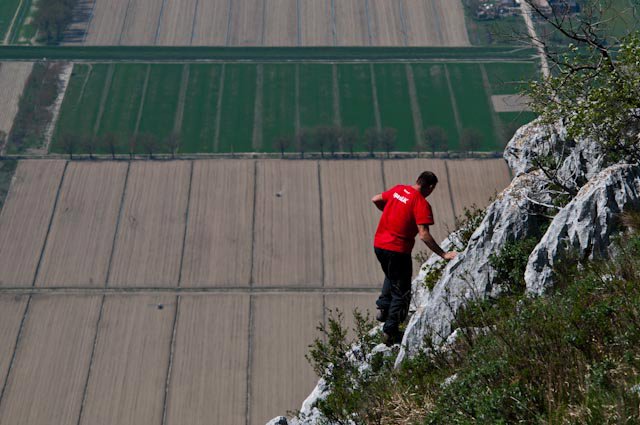
And into the stunning Učka Nature Park, made up of Mount Učka and part of the Ćićarija mountain range.
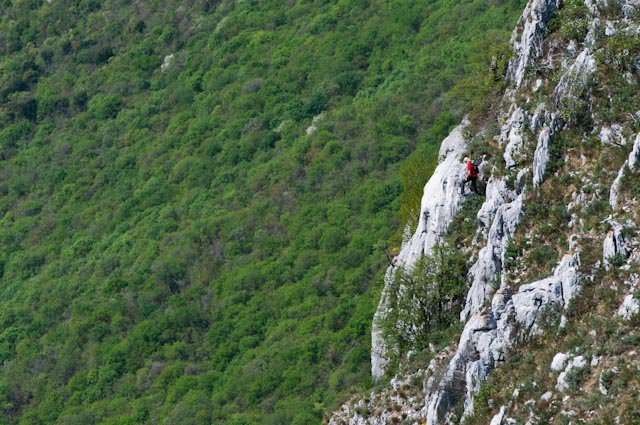
Daniel in action on the reefs in Učka.

Ozren Renko and Daniel Lacko pedalling on demanding macadam in Učka.

Daniel was even struggling a bit.
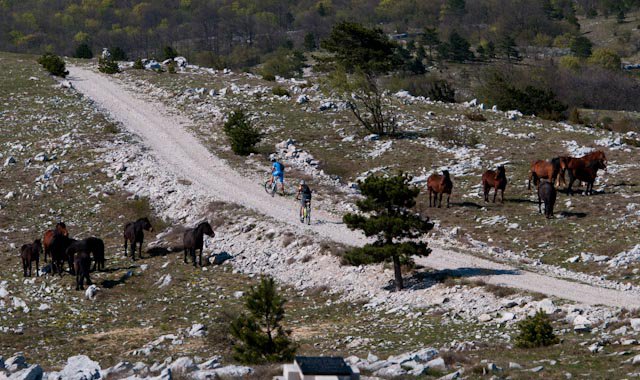
But then there were horses.
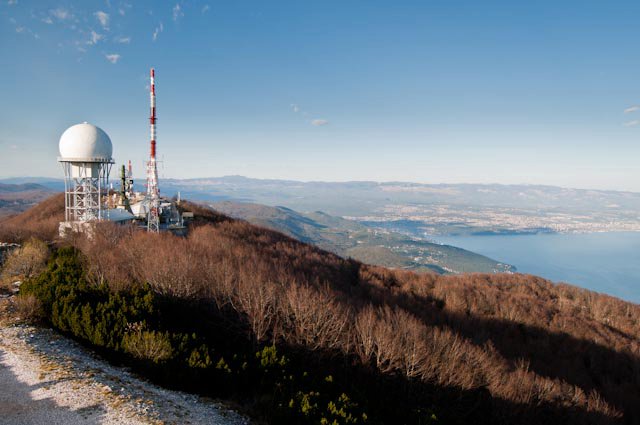
And a stunning view from Vojak.
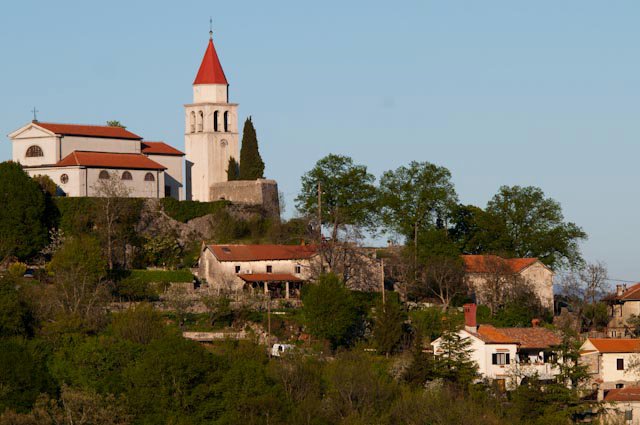
From Učka, they made their way to Veprinac, known to have the most beautiful view on Kvarner.

And finally arrived in Matulji, just five kilometers from the town of Opatija, before sundown.
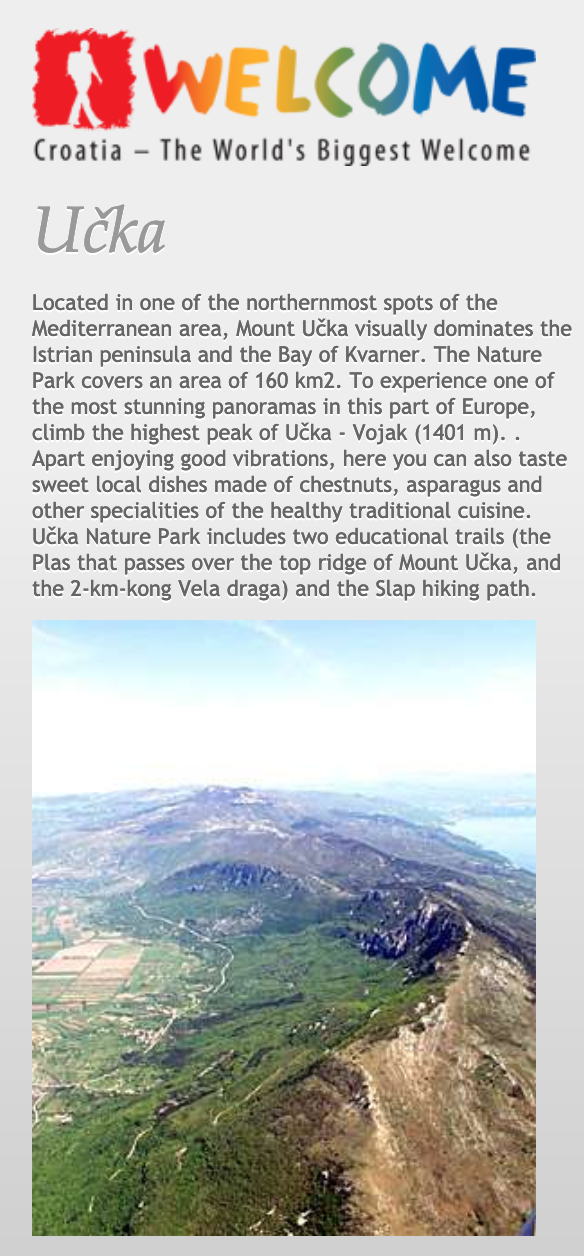
A key part of the project was promoting tourism, and the official website has details of the key places visited during the day. Učka.
You can see the entire project on the Welcome website, as well as much more of Luka Tambaca's stunning photography on the Welcome Facebook page.
Tune in tomorrow for Day 6, as Lacko moves from Opatija to Delnice by bike and on foot.
To follow the whole project from the start, follow the dedicated TCN page.
World's Biggest Welcome in Croatia: Day 4 - Pazin to Labin (Kayak, Bike)
March 31, 2019 - Putting Croatian adventure tourism on the map, with the biggest welcome in the world. Day 4 of this incredible 2011 adrenaline trip covering 2,500 km along the Croatian coast.
The World's Biggest Welcome, an ambitious adventure tourism project in 2011 in Croatia enters Day 4 of this 2019 appreciation of one of the finest tourism promotion projects ever in Croatia.
The plan? To showcase the diversity and fabulous offer of adventure tourism in Croatia by following a GPS route the length of the Croatian coast in the shape of the word 'Welcome' - thereby creating the biggest welcome in the world from a hospitable tourism country.
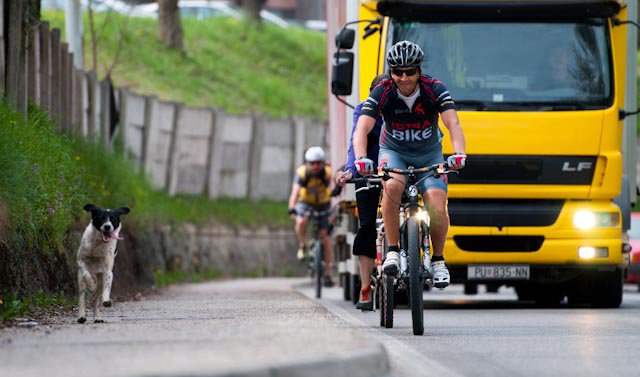
Day 4 was a 3-stage kayak and bike ride from Pazin to Labin, and there was even four-legged support on the initial cycle from Pazin.
65 kilometres for the day: 20 km by bike from Pazin to Rasa, followed by a 20 km kayak paddle from Rasa to Koromacno, before heading north once more on the final part of the first letter (W of Welcome), 25 km to the overnight resting point of Labin.

Lacko managed to outpace some of the locals ascending the glorious hills of Istria.
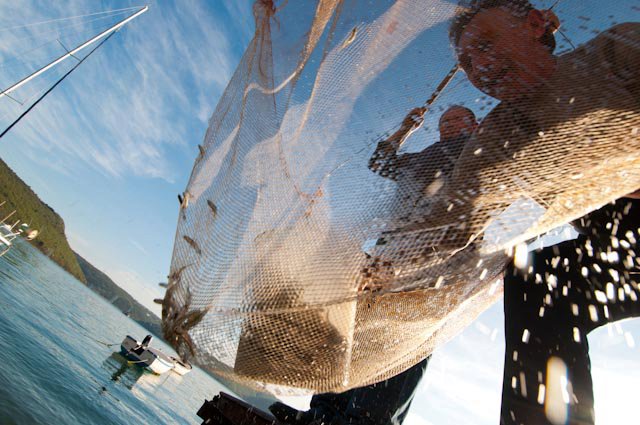
It was also an opportunity to observe and appreciate the traditional way of life of the locals in Istria. Here, the locals are fishing for whitebait in Trget.
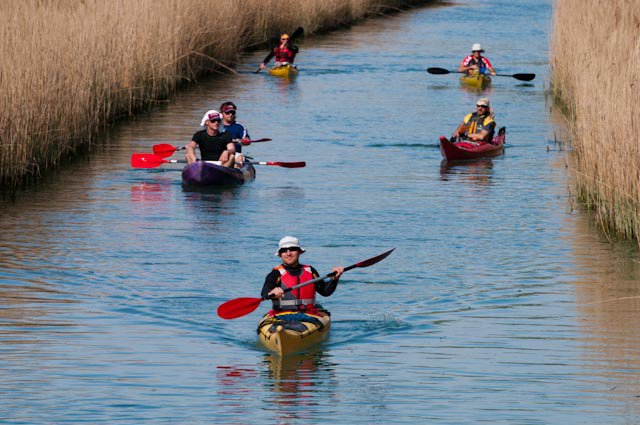
The early stages of the World's Biggest Welcome were dominated by sea kayaking, and Lacko was back in the water for the second leg of the day. negotiating the River Rasa channel with companions.
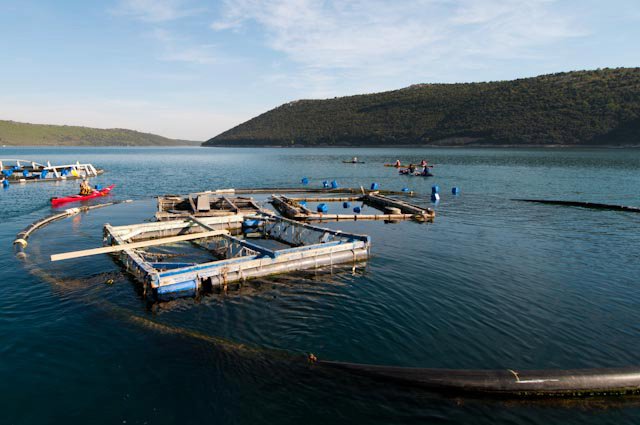
There was plenty to see along the way, including the mussel farms of Rasa.
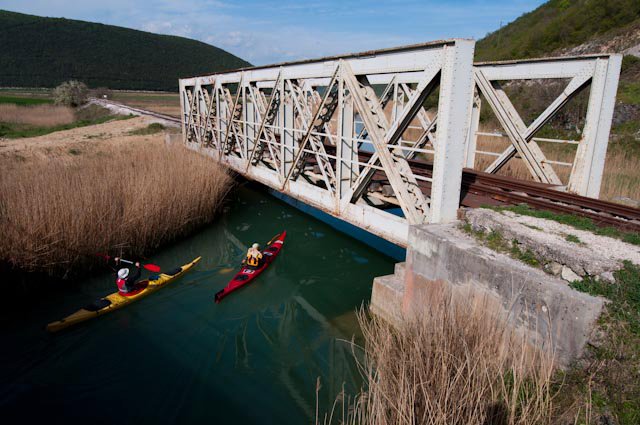
Onwards under a bridge on River Rasa.
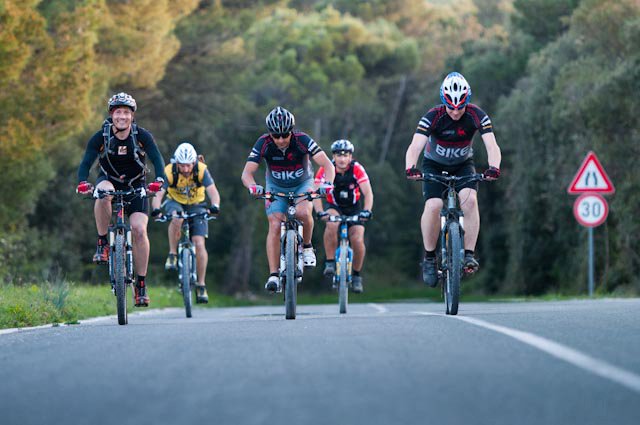
Istria is fast becoming one of the most exciting cycling destinations in the region, with its rolling green hills, exceptional vineyards and historic stone hilltop towns. The last leg of the day was a cycle along the eastern part of the peninsula.
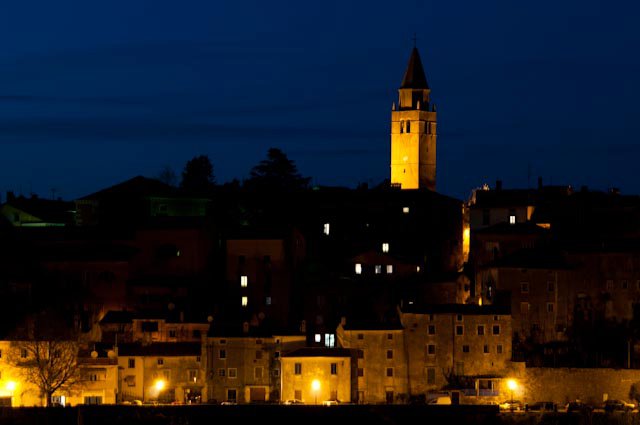
Destination Labin, yet one more touristic jewel on the region they call 'the Croatian Tuscany'.
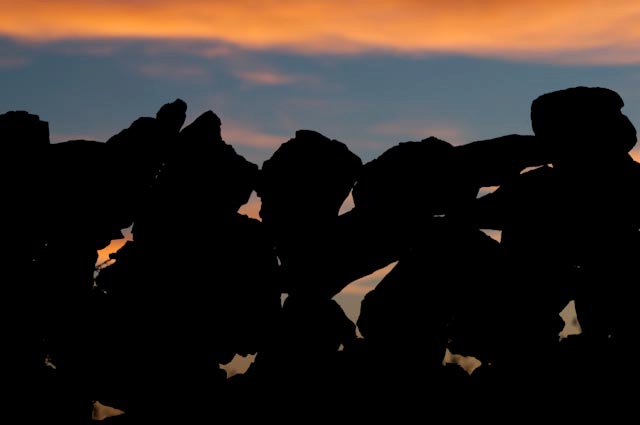
And no day would be complete without photographer Luka Tambaca capturing another glorious sunset, this time through Croatia's famous dry stone walls.
A key part of the project was promoting tourism, and the official website has details of the key places visited during the day. Pazin.
You can see the entire project on the Welcome website, as well as much more of Luka Tambaca's stunning photography on the Welcome Facebook page.
Tune in tomorrow for Day 5, as Lacko moves from Labin to Opatija by bike and on foot.
To follow the whole project from the start, follow the dedicated TCN page.
Labin Factory Workers Get Pay Rise Instead of Sack in Company Turnaround
One Labin factory goes from the worrying signs of closure to contracting brand new jobs in a dramatic yet welcome turnaround.
As Poslovni Dnevnik writes on the 30th of January, 2019, back in October last year, the Syndicate of Istria, Kvarner and Dalmatia warned that after five years of successfully dealing with mobile homes for camps, there would be a possibility of shutting down the CR Abitare factory in Labin, Istria.
Instead of getting the sack from the company, which at one point looked like an unfortunate yet very likely option, the workers of the Labin-based company CR Abitare, who produce mobile homes for camps for some of the largest tourist companies in the Republic of Croatia, received a higher salary.
The reason for the rising levels of anxiety which began back in 2018 when the possibility of the factory's closure arose, was that the production hall had gradually begun to empty, and the workers, twenty of them permanently employed and thirty seasonal workers, had no information.
But the formerly enfeebled company, according to a report from Glas Istre, has continued to operate, and unlike other large companies that have made headlines lately for all the wrong reasons, its workers have been being continually paid their salaries all the time, and the amount has risen by nine percent since the 1st of January, 2019.
In November last year, several new orders for mobile homes were contracted by the Labin company, which are now in the process of production, with delivery expected over the coming days. According to reassuring employer announcements, further orders are also expected.
Although there are currently no new jobs on offer at the Labin factory as it gets back on its feet remarkably quickly, it is to be expected that an increase in the production plan will naturally create the conditions for that at some point or another.
Make sure to stay up to date with our dedicated business page for much more.


